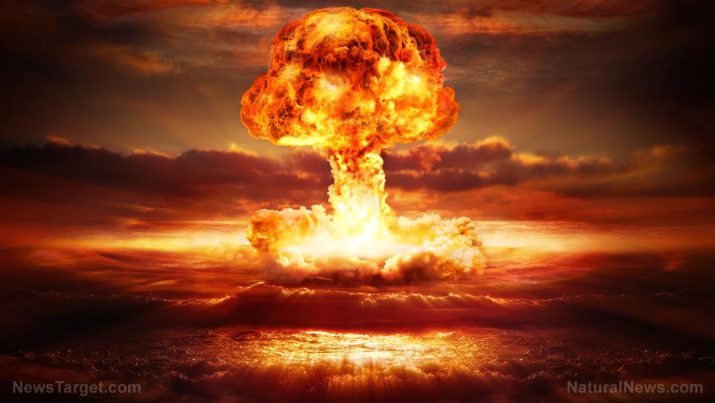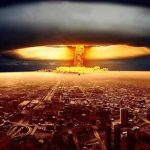
The EMP threat put in context: It may not be the top threat we face, but it’s still a threat – Part 1
Monday, June 05, 2017 by JD Heyes
http://www.emp.news/2017-06-05-the-emp-threat-put-in-context-it-may-not-be-the-top-threat-we-face-but-its-still-a-threat-part-1.html

Earlier this year, former CIA Director James Woolsey and Dr. Peter Pry, head of a new congressional panel, were tasked with the job of studying the threat and aftereffects of an electromagnetic pulse event or attack on the power grid and infrastructure it supports throughout the United States.
Their assessment was grim: They opined that 90 percent of Americans would perish within one year of an EMP event. As Bugout.news reported at the time:
A few weeks back, former CIA Director James Woolsey and EMP Commission Chairman Dr. Vincent Pry from the Task Force on National and Homeland Security, published an article on TheHill.com, where they argued that a nuclear EMP attack could wipe out 90% of the U.S. population. Woolsey and Pry cite the Congressional EMP Commission, arguing, “a single warhead delivered by North Korean satellite could blackout the national electric grid and other life-sustaining critical infrastructures for over a year – killing 9 of 10 Americans by starvation and societal collapse.”
Naturally, such a dire prediction made news in many circles, especially prepper, survival and alternative media sites, which are attuned to such threats and regularly advise and report on them.
But as former congressional staffer Gregory T. Kiley wrote in the Washington Examiner last week, as spooky as an EMP event/attack may sound, it’s not really a top threat. (RELATED: How To Make A Tin Can WiFi Antenna After An EMP)
Why? Because it’s not something that is a new development, Kiley explains; the U.S. government has been studying the issue (and planning for it) since the dawn of the atomic age.
Recently, during a hearing of the Senate Energy and Natural Resources Committee, Chairwoman Lisa Murkowski, R-Alaska, summed up the context of the threat when she said: “The United States has recognized potential EMP attack as a national security threat for decades, and our efforts to understand potential EMP burst are not new.”
The reality is, the Pentagon and our national labs have been studying EMP bursts since both began conducting extensive testing in the 1950s, tests which stretched into the 1960s. And to this day, the threat is still under study; the following video shows an EMP threat test from 2011:
Regarding the “90 percent” figure cited by Woolsey and Pry, Kiley said a link in their original article cites the words of former Rep. Roscoe Bartlett, a Republican who represented Maryland’s 6th District from 1993-2013, who was describing a novel he read called One Second After.
Bartlett noted: “The weapon was launched about 300 miles high over Nebraska, and it shut down our infrastructure countrywide… At the end of the year, 90 percent of our population is dead; there are 25,000 people only still alive in New York City.”
Woolsey and Pry frequently cite that statistic and note dourly that nine of 10 Americans would perish in such an attack. And while there may be some truth to that claim, Kiley adds that Woolsey just happened to have worked with “three different venture capital firms who have investments in companies that could profit off of EMP hysteria.” Oops. (RELATED: U.S. Military Developing 7-Day Restoration Plan If Power Grid Destroyed By Cyber Attack)
That said, Kiley does not suggest that an EMP threat isn’t real or has been completely debunked by the government. In fact, he said that testimony before the Senate ENR Committee by Cheryl LaFleur, the acting chairperson of the Federal Energy Regulatory Commission (FERC), was worthy of mention:
…[W]hile there has been much written regarding the nature of the threat from EMP, consensus has not been reached regarding how best to protect against it. While the military has developed protocols to protect key assets, these protocols have been described by Los Alamos National Laboratory as “not widely implemented in civilian applications due to the expense,” and by Idaho National Laboratory as “focused on load center protection for communication stations, control and missile critical facilities, not distribution, transmission and large generation assets for the electric power grid.
In other words, Kiley notes, the EMP threat is real but given scarce government resources and the cost of protecting the entire grip from EMP attack, in a world of competing challenges it isn’t yet the No. 1 area of concern.
But it is still a concern.
How should you prepare? That’s coming next, so stay tuned.
J.D. Heyes is a senior writer for NaturalNews.com and NewsTarget.com, as well as editor of The National Sentinel.
Sources:
Tagged Under: Tags: EMP attack, Lights Out, nuclear attack, power grid, prepper, solar flare





